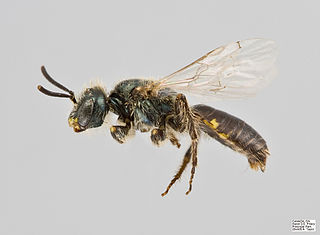
Leptopelis is a genus of frogs in the family Arthroleptidae. They are found throughout Sub-Saharan Africa, excluding Madagascar. It is placed in monotypic subfamily Leptopelinae, although this subfamily is not always recognized. They have a number of common names, including forest treefrogs, tree frogs, leaf-frogs, and big-eyed frogs.

Sphaerium corneum, also known as the European fingernailclam, is a very small freshwater clam, an aquatic bivalve mollusk in the family Sphaeriidae, the fingernail clams.

Sphaerium is a genus of very small freshwater clams, aquatic bivalve molluscs in the family Sphaeriidae, known as the fingernail clams. The small clams in this genus are unusual in that many of them, such as Sphaerium corneum, can climb around underwater on aquatic plants, using their long and strong foot.
Sphaerium nucleus is a freshwater bivalve of the family Sphaeriidae. It has been often confused with Sphaerium corneum and is consequently quite poorly known.

Sphaeriidae is a family of small to minute freshwater bivalve molluscs in the order Sphaeriida. In the US, they are commonly known as pea clams or fingernail clams.
Sphaerium solidum, the solid orb mussel, is a species of freshwater bivalve from family Sphaeriidae.
Sphaerium ovale is a freshwater bivalve of the family Sphaeriidae.
Leptopelis bequaerti is a species of frog in the family Arthroleptidae. It is endemic to Liberia and only known from its type locality, Gbarnga, and from Mount Coffee. Common name Gbanga forest treefrog has been coined for it. It is a poorly known species with uncertain taxonomic validity.

Phrynobatrachus bequaerti is a species of frog in the family Phrynobatrachidae. It is found in the mountains of north-western Burundi, eastern Democratic Republic of the Congo, and western Rwanda. The specific name bequaerti honours Joseph Charles Bequaert, a Belgian botanist, entomologist, and malacologist and who collected the holotype from Mount Vissoke. Common name Vissoke river frog has been coined for this species.
Sphaerium stuhlmanni is a species of freshwater bivalve in the family Sphaeriidae. It is endemic to Lake Victoria in Kenya, Tanzania and Uganda. It occurs on muddy and sandy bottoms, typically in shallow waters but potentially down to 50 m depth.

Stagnicola utahensis, common name the thickshell pondsnail, is a species of air-breathing freshwater snail, an aquatic pulmonate gastropod mollusk in the family Lymnaeidae, the pond snails. This species is endemic to Utah Lake in the United States. The last living snails were found in the 1930s.

Subulina is a genus of small tropical air-breathing land snails, terrestrial pulmonate gastropod mollusks in the family Achatinidae.
Aethiothemis bequaerti is a species of dragonfly in the family Libellulidae. It is found in Angola, Malawi, Nigeria, Zambia, and possibly Mozambique. Its natural habitats are subtropical or tropical moist lowland forests, subtropical or tropical dry shrubland, swamps, and marshes.

Joseph Charles Bequaert was an American naturalist of Belgian origin, born 24 May 1886 in Torhout (Belgium) and died on 12 January 1982 in Amherst, Massachusetts.
Congosaurus is an extinct genus of dyrosaurid mesoeucrocodylian. Fossils have been found from Lândana, in Angola and date back to the Paleocene epoch. In 1952 and 1964 Congosaurus was proposed to be synonymous with Dyrosaurus. The genus was later thought synonymous with Hyposaurus in 1976 and 1980. It has since been proven a distinct genus of dyrosaurid separate from both Dyrosaurus and Hyposaurus.
Sphaerium beckmani is an extinct species of fossil freshwater pea clams from the Late Cretaceous deposits of North America. This species was first described by the American paleontologist Loris Shano Russell in 1976. The specimens were collected by the American paleontologist Karl M. Waage from 1961 to 1962 from the Hell Creek Formation of eastern Montana. The locality is dated to the late Maastrichtian Age.
Mallota bequaerti is a species of syrphid fly in the family Syrphidae.

The Bequaert's miner bee is a species of miner bee in the family Andrenidae. Another common name for this species is the Bequaert's perdita. It is found in North America.








